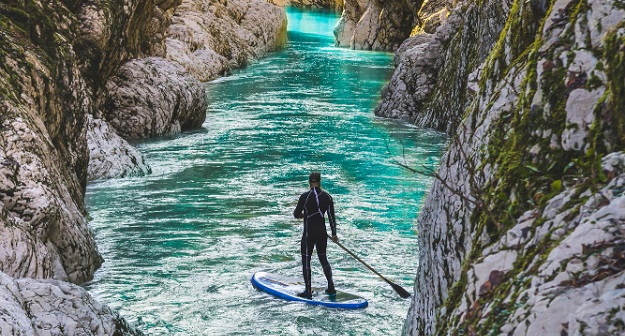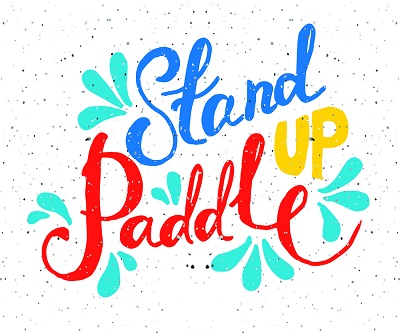 Rivers can pose serious hazards to your stand up paddleboard and your safety. Especially when running rapids and churning whitewater. The stand up paddleboarding experience can be peaceful, exciting, challenging and rewarding in a number of ways. However, there is no need to make it more dangerous than it already is. Remember the 5 following tips the next time you hit the rapids on your SUP and you can create a wonderful memory instead of a dangerous mistake.
Rivers can pose serious hazards to your stand up paddleboard and your safety. Especially when running rapids and churning whitewater. The stand up paddleboarding experience can be peaceful, exciting, challenging and rewarding in a number of ways. However, there is no need to make it more dangerous than it already is. Remember the 5 following tips the next time you hit the rapids on your SUP and you can create a wonderful memory instead of a dangerous mistake.
Always Go with 1 or More
Hitting whitewater on your SUP without at least one more person in your party is just plain irresponsible. Remember, the more the merrier, there are safety in numbers, and all of that. Having at least one other person join you in the rapids just makes sense for a lot of safety reasons, and the social experience positively enhances your outing.
Remember – Function before Fashion
There is a good chance that the law requires you to wear a personal flotation device (PFD) when you go whitewater paddleboarding. Even if it doesn’t, you need to strap into a PFD anyway. PFDs save lives, plain and simple. They are designed to deliver a face-up floating experience if you are knocked unconscious, and also provide shock protection if you are thrown from your board.
Wear a Helmet Always
This is really an offshoot of the previous tip. If you are rendered unconscious, you are totally at the mercy of the river. Even if you are hitting the rapids with a partner, you may have to perform a self-rescue if something goes wrong. You certainly cannot do that if you are unconscious. Protect your coconut and wear a helmet.
Take a Whitewater Swimming Course
Swimming in the rapidly moving water of a river full of rocks, branches, logs and constantly changing water flow is extremely difficult. It is nothing like the beach, pool or lake experience you are used to. Sign up for a course that teaches specific rapids swimming and safety techniques, because whitewater is very unpredictable.
Know Your Course
This is one of the most important SUP whitewater tips to remember. Shooting the rapids safely and successfully means knowing your river environment. If you are unsure of or unfamiliar with a section of whitewater, do not go unless you can find someone that is intimate with that area.
Use a Quick-Release Leash Only
A leash is absolutely required if you are surfing or cruising the beach or flat water. Fast-moving rapids mean that your board could be taken from you in a hurry if it is not attached to you by your leash. But a leash can also become deadly in whitewater. That is why you should insist upon a quick-release leash when you take your SUP out on the rapids.
